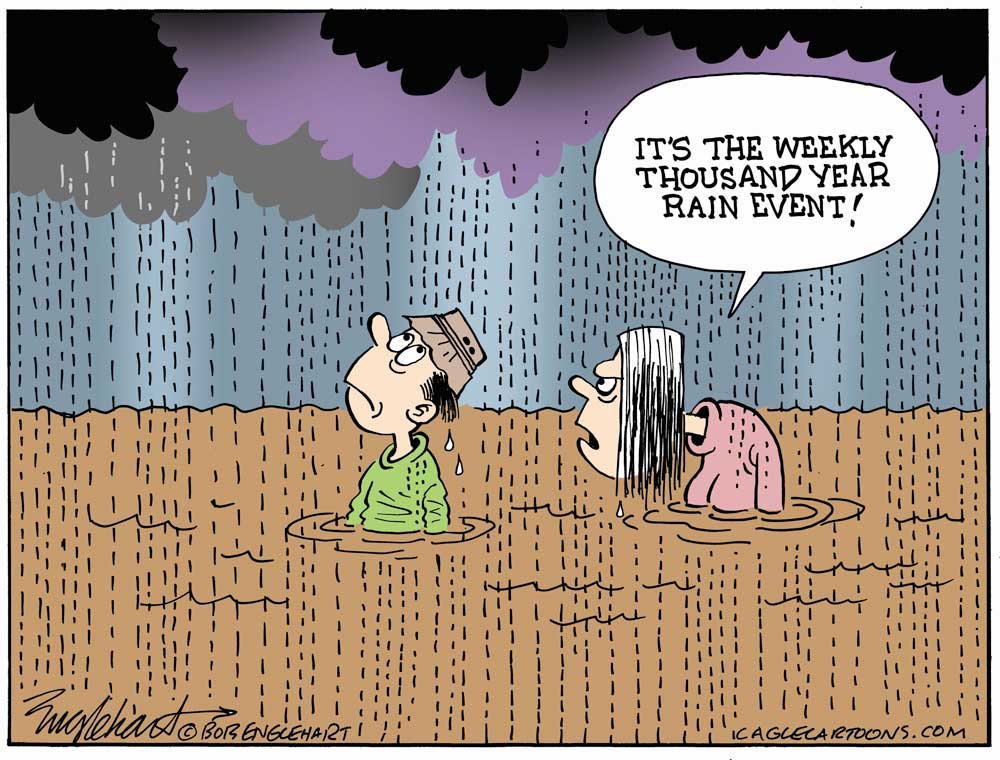
Weather: Mostly cloudy with a chance of showers with a slight chance of thunderstorms. Highs in the lower 90s. Southwest winds around 5 mph. Chance of rain 50 percent. Wednesday Night: Mostly cloudy in the evening, then becoming partly cloudy. A slight chance of thunderstorms. A chance of showers, mainly in the evening. Lows in the lower 70s. South winds around 5 mph. Chance of rain 50 percent.
Today at the Editor’s Glance:
The state Elections Canvassing Commission certifies the results of the Aug. 23 primary elections at 9 a.m. in the Cabinet meeting room in the Capitol.
Renatha Francis begins serving as a Florida Supreme Court justice following her appointment by Gov. Ron DeSantis. She had been a Palm Beach County circuit judge. She replaces Justice Alan Lawson.
The Flagler Youth Orchestra Strings Program holds its open house today at the Flagler Auditorium starting at 5:30 p.m., 5500 State Road 100, in Palm Coast. Flagler County’s public, private, charter and home-schooled students, 8 years old and older, may sign up to play violin, viola, cello, or double bass. Beginner, intermediate and advanced musicians are welcome. Tuition is free. Limited instrument scholarships are available. Students will learn about the enriching world of classical music and many other genres while receiving comprehensive string instruction in a player-friendly environment twice a week after school. Enrollment is open now and until Sept. 14. Visit the string program’s website at www.flagleryouthorchestra.org to enroll online. The Flagler Youth Orchestra is a special project of the Flagler County School District. For more information about the program, call (386)503-3808 or email [email protected].
The Blue 22 Forum, a discussion group organized by the Palm Coast Democratic Club, meets at 12:15 p.m. at the Palm Coast Community Center. Come and add your voice to local, state and national political issues.
 Notably: One of the great books of reporting of the 20th century, Hiroshima, was published on this day in 1946 when The New Yorker devoted its entire issue to John Hersey’s work, a year and three weeks after the Enola Gay had dropped the bomb. The entire piece is available at The New Yorker’s site, free. The 30,000-word piece follows six survivors for months in a city where 62,000 of 90,000 were destroyed. “A hundred thousand people were killed by the atomic bomb, and these six were among the survivors,” he wrote. “They still wonder why they lived when so many others died. Each of them counts many small items of chance or volition a step taken in time, a decision to go indoors, catching one street-car instead of the next that spared him. And now each knows that in the act of survival he lived a dozen lives and saw more death than he ever thought he would see. At the time none of them knew anything.” The magazine’s print run sold out in hours. ABC radio broadcast a special, reading out loud the entire piece. Readers were horrified. Ernie Pyle had never written anything like this. It wasn’t his style. He was more booster than reporter. Hersey in Hiroshima did in writing what the camera would later do in Vietnam: expose the atrocity of war raw, with little no commentary. What commentary do you need when describing how “their faces were wholly burned, their eyesockets were hollow, the fluid from their melted eyes had run down their cheeks”? though Hersey wasn’t beyond that, too: “The crux of the matter is whether total war in its present form is justifiable, even when it serves a just purpose. Does it not have material and spiritual evil as its consequences which far exceed whatever good might result? When will our moralists give us an answer to this question?” In a Great Courses lecture I was listening to this morning, on a segment about Aeschylus, the lecturer, J. Rufus Fears (professor of Classics at Oklahoma University), who’s prone to absolutes (he’s more Plato than Hume) says at one point: “Winston Churchill defined a tyrant as a person who believes that his own comfort, his own ideas, his own policy is worth the lives of millions. Does that not define an Adolf Hitler? And his racial ideas were worth the lives of 6 million people? Does that define a Joseph Stalin, who believed that his ideas about communism were worth 20 million people suffering? Oh, tyranny is the abuse of power.” Winston Churchill had read his Raskolnikov, whose belief it was that yes, to great men like Napoleon, meaningless lives did not matter so long as there was a greater purpose, he killed the old pawnbroker and Lizaveta. But it’s a little simplistic to ascribe all that to an abuse of power, isn’t it? Aren’t those calculations made all the time by people we consider heroes? Somewhere around or above 200,000 people were killed at Hiroshima and Nagasaki, two cities the atrocious Curtis LeMay–the firebomber of Dresden, the general who would have launched a pre-emptive strike during the Cuban missile crisis had JFK not stopped him– targeted not because of their military value, but because there were no longer any targets worth bombing in Japan. Truman wanted to send a message, keep his own men from getting clobbered. The bombings of European cities had done the same, even when there were no military values to those targets. The aim was worth it, wasn’t it? In freedom’s name. “A year after the bomb was dropped,” Hersey writes of his six people, “Miss Sasaki was a cripple; Mrs. Nakamura was destitute; Father Kleinsorge was back in the hospital; Dr. Sasaki was not capable of the work he once could do; Dr. Fujii had lost the thirty-room hospital it took him many years to acquire, and had no prospects of rebuilding it; Mr. Tanimoto’s church had been ruined and he no longer had his exceptional vitality. The lives of these six people, who were among the luckiest in Hiroshima, would never be the same.” The book was a sensation. But Garret Graff in a footnote in Raven Rock, the 2017 book about the U.S. government’s “secret plan to save itself while the rest of us die,” wrote: “Not everyone saw atomic weapons, though, as a bad thing. ‘I read Hersey’s report,’ one New Yorker subscriber wrote. ‘It was marvelous. Now let us drop a handful on Moscow.'”
Notably: One of the great books of reporting of the 20th century, Hiroshima, was published on this day in 1946 when The New Yorker devoted its entire issue to John Hersey’s work, a year and three weeks after the Enola Gay had dropped the bomb. The entire piece is available at The New Yorker’s site, free. The 30,000-word piece follows six survivors for months in a city where 62,000 of 90,000 were destroyed. “A hundred thousand people were killed by the atomic bomb, and these six were among the survivors,” he wrote. “They still wonder why they lived when so many others died. Each of them counts many small items of chance or volition a step taken in time, a decision to go indoors, catching one street-car instead of the next that spared him. And now each knows that in the act of survival he lived a dozen lives and saw more death than he ever thought he would see. At the time none of them knew anything.” The magazine’s print run sold out in hours. ABC radio broadcast a special, reading out loud the entire piece. Readers were horrified. Ernie Pyle had never written anything like this. It wasn’t his style. He was more booster than reporter. Hersey in Hiroshima did in writing what the camera would later do in Vietnam: expose the atrocity of war raw, with little no commentary. What commentary do you need when describing how “their faces were wholly burned, their eyesockets were hollow, the fluid from their melted eyes had run down their cheeks”? though Hersey wasn’t beyond that, too: “The crux of the matter is whether total war in its present form is justifiable, even when it serves a just purpose. Does it not have material and spiritual evil as its consequences which far exceed whatever good might result? When will our moralists give us an answer to this question?” In a Great Courses lecture I was listening to this morning, on a segment about Aeschylus, the lecturer, J. Rufus Fears (professor of Classics at Oklahoma University), who’s prone to absolutes (he’s more Plato than Hume) says at one point: “Winston Churchill defined a tyrant as a person who believes that his own comfort, his own ideas, his own policy is worth the lives of millions. Does that not define an Adolf Hitler? And his racial ideas were worth the lives of 6 million people? Does that define a Joseph Stalin, who believed that his ideas about communism were worth 20 million people suffering? Oh, tyranny is the abuse of power.” Winston Churchill had read his Raskolnikov, whose belief it was that yes, to great men like Napoleon, meaningless lives did not matter so long as there was a greater purpose, he killed the old pawnbroker and Lizaveta. But it’s a little simplistic to ascribe all that to an abuse of power, isn’t it? Aren’t those calculations made all the time by people we consider heroes? Somewhere around or above 200,000 people were killed at Hiroshima and Nagasaki, two cities the atrocious Curtis LeMay–the firebomber of Dresden, the general who would have launched a pre-emptive strike during the Cuban missile crisis had JFK not stopped him– targeted not because of their military value, but because there were no longer any targets worth bombing in Japan. Truman wanted to send a message, keep his own men from getting clobbered. The bombings of European cities had done the same, even when there were no military values to those targets. The aim was worth it, wasn’t it? In freedom’s name. “A year after the bomb was dropped,” Hersey writes of his six people, “Miss Sasaki was a cripple; Mrs. Nakamura was destitute; Father Kleinsorge was back in the hospital; Dr. Sasaki was not capable of the work he once could do; Dr. Fujii had lost the thirty-room hospital it took him many years to acquire, and had no prospects of rebuilding it; Mr. Tanimoto’s church had been ruined and he no longer had his exceptional vitality. The lives of these six people, who were among the luckiest in Hiroshima, would never be the same.” The book was a sensation. But Garret Graff in a footnote in Raven Rock, the 2017 book about the U.S. government’s “secret plan to save itself while the rest of us die,” wrote: “Not everyone saw atomic weapons, though, as a bad thing. ‘I read Hersey’s report,’ one New Yorker subscriber wrote. ‘It was marvelous. Now let us drop a handful on Moscow.'”
Now this: In 2019 Japan Today ran an article about John Hersey’s reporting trip to Hiroshima in 1946. The article included the following paragraphs, and the video below: “Although Hersey’s “Hiroshima” affected the general American public profoundly, it would take decades for the American media to rid itself of Asian insensitivity. One hideous example of this was in 1955, when the program “This is Your Life” invited Rev Kiyoshi Tanimoto to be a featured guest. Tanimoto accepted, mainly because he was attempting to help raise money and awareness for the Hiroshima Maidens, a group of around 25 Japanese young women who had been disfigured from the bombing and were looking for help from doctors and plastic surgeons. The show went ahead and organized a surprise encounter with Tanimoto and Enola Gay co-pilot Robert A Lewis. Here, around the 16-minute mark, is one of the more cringe-inducing moments in television history, and perhaps a reminder of how not great America was back in the 1950s:”
Flagler Beach Webcam:
![]()
The Live Calendar is a compendium of local and regional political, civic and cultural events. You can input your own calendar events directly onto the site as you wish them to appear (pending approval of course). To include your event in the Live Calendar, please fill out this form.
December 2025
ESL Bible Studies for Intermediate and Advanced Students
Grace Community Food Pantry on Education Way
Palm Coast Farmers’ Market at European Village
‘Annie,’ at Limelight Theatre
‘Greetings,’ A Christmas Comedy
Irving Berlin’s Holiday Inn
Al-Anon Family Groups
Rotary’s Fantasy Lights Festival in Palm Coast’s Town Center
East Flagler Mosquito Control District Board Meeting
In Court: Jermaine Williams Status Hearing
In Court: Kristopher Henriqson
Flagler County Commission Evening Meeting
Nar-Anon Family Group
Rotary’s Fantasy Lights Festival in Palm Coast’s Town Center
Palm Coast Charter Review Committee Meeting
For the full calendar, go here.

Early that day, August 7th, the Japanese radio broadcast for the first time a succinct announcement that very few, if any, of the people most concerned with its content, the survivors in Hiroshima, happened to hear: “Hiroshima suffered considerable damage as the result of an attack by a few B-29s. It is believed that a new type of bomb was used. The details are being investigated.” Nor is it probable that any of the survivors happened to be tuned in on a short-wave rebroadcast of an extraordinary announcement by the President of the United States, which identified the new bomb as atomic: “That bomb had more power than twenty thousand tons of TNT. It had more than two thousand times the blast power of the British Grand Slam, which is the largest bomb ever yet used in the history of warfare.” Those victims who were able to worry at all about what had happened thought of it and discussed it in more primitive, childish terms—gasoline sprinkled from an airplane, maybe, or some combustible gas, or a big cluster of incendiaries, or the work of parachutists; but, even if they had known the truth, most of them were too busy or too weary or too badly hurt to care that they were the objects of the first great experiment in the use of atomic power, which (as the voices on the short wave shouted) no country except the United States, with its industrial know-how, its willingness to throw two billion gold dollars into an important wartime gamble, could possibly have developed.
–From John Hersey’s Hiroshima (1946).







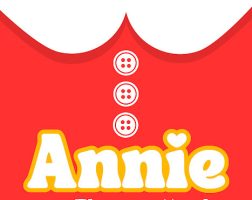

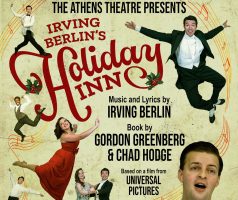



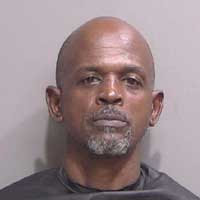
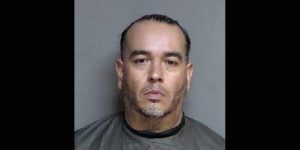


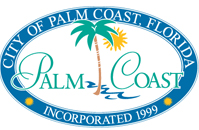
























Bob says
Food for thought. Is it the rain or is it thee building of new roads,appartments,homes and I could go on and on. These all take away the forests.etc. Most cities and states do not have programs as they do here . The ponds in almost all ares absorb the run off. One can only take away so much green before it floods. Water has no place to go.